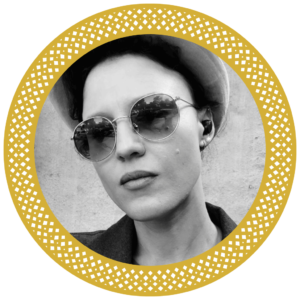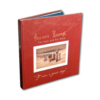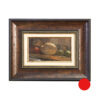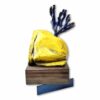Adri Rademeyer


Adri Rademeyer, was born in 1989 on the 31st of January. Her father Joof
affectionately called her Pay Day as a fledgling. She is the first person in
her family to pursue a career as an artist, but the artistic roots run deep.
Adri studied fine art and achieved a Master Degree in 2015 from
Tshwane University of Technology, Arts Campus. Currently teaching
Design and Technology and Afrikaans at the British Academy, a private
Cambridge Education school.
Every moment in between is consumed by art. “I am inspired by the
intersection of art and technology. I explore the form and mal-adapted
function of various mechanical and organic structures and organisms. I
draw stimulus to create from symbolism and to achieve this, I use
various animals and portraiture, intertwined with distortion, disintegration, and manipulation. Profound amongst these is the humble pig and farmer. The pig has been a recurring symbol in art. Throughout history, it often possesses various layers of meaning such as gluttony and excess. Due to their reputation for excessive eating, they remind viewers of the dangers of indulgences of various kinds and materialistic pursuits. In addition, I employ the pig as a satirical symbol to critique deeply personal aspects of my character as well as social elements within my environment. Through allegory they represent hypocrisy. They have been allied to notions of rebirth and transformation, particularly in mythology and folklore. This is correlated to the notion of their ability to transform waste into substance.
“I frequently appropriate the symbol of the farmer to represent self-sufficiency and independence as it stands as a symbol of resilience and autonomy. It is the expected role that both pig and farmer fulfil that creates a dichotomy, as one is traditionally seen as the eater and the other as the feeder, therefore being co-dependent. One can say that both the pig and the farmer are the two sides of me. The schism”.




